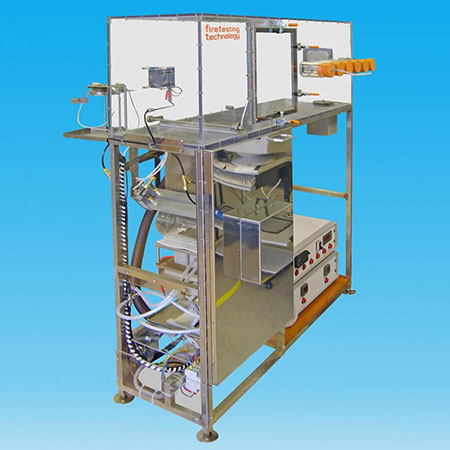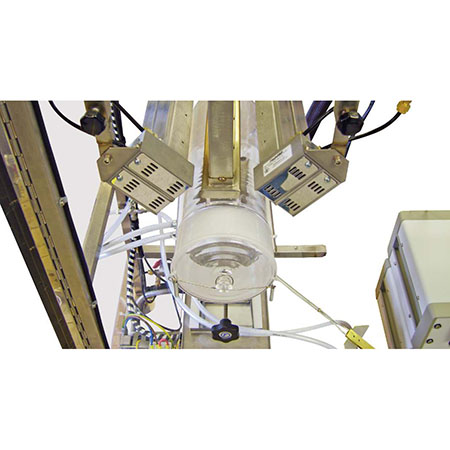Description
The ASTM E1678 test uses radiant heat with spark ignition to combust a sample of material and helps to characterise the product by measuring ease of ignition (time), rate of smoke generation (mass loss) and toxicity (gas analysis). These are essential parameters in the evaluation of the potential fire hazard of products. Future possibility of being up-graded with additional instrumentation to monitor corrosivity.
The overall apparatus consists of a combustion cell and a test chamber, connected by an enclosed passage (chimney). External to the combustion cell, which contains the specimen platform, are radiant heat lamps and a load cell. The test chamber has provision for colorimetric gas reaction tubes in one side of the chamber. Gas analysis instrumentation is located external to the apparatus, with gas samples extracted from the test chamber. The combustion cell, test chamber and chimney are assembled in such a manner that they may be separated for cleaning.
The unit has not been designed for animal testing.
Main features:
- The sample orientation is horizontal
- Suitable for testing sample assemblies
- Polycarbonate chamber of 200 litres
- Heat Flux Meter
- Irradiation levels 10-50kW/m²
- Spark ignition
- Load Cell with sample capacity of 500g
- 15 ports for outlet to gas analysers
NFPA 269 Test:
The smoke toxicity fire test apparatus is designed to assess the toxic potency of combustion products from various materials or products, presented as planar specimens. The apparatus consists of a combustion cell and an exposure chamber, connected by an enclosed passage (chimney).
External to the combustion cell, which contains the specimen platform, are placed 4 radiant heat lamps and a load cell. The exposure chamber has six tubular housings, provided for exposing targets. Optional gas analysis instrumentation, for determination of smoke toxicity, can be purchased separately. The combustion cell, exposure chamber and chimney are assembled in such a manner that they may be separated for cleaning purposes (after a test).
Main Features:
- Exposure Chamber
- Combustion Cell
- Chimney
- Smoke Shutter
- Radiant Heaters
- Spark Igniter
- Specimen Holder and Load Cell

 Enquiry:hkmarketing@epc.com.hk
Enquiry:hkmarketing@epc.com.hk 












